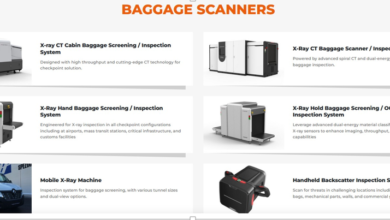
What Is vMVPD and How It’s Revolutionizing TV Access
The television industry is undergoing a seismic transformation, driven by technological evolution and a growing demand for flexible, affordable content delivery. At the forefront of this shift are virtual Multichannel Video Programming Distributors (vMVPDs)—digital platforms that offer a modern take on traditional TV. By streaming live and on-demand content over the internet, vMVPDs are redefining how viewers consume entertainment and how the industry delivers it. This article explores the mechanics, benefits, and broader implications of vMVPDs as they revolutionize television access.
The Mechanics of vMVPDs: A New Paradigm for TV Delivery
A vMVPD, or virtual Multichannel Video Programming Distributor, is an internet-based service that delivers live TV channels and on-demand content without the need for cable or satellite infrastructure. Popular examples include:
- YouTube TV
- Hulu + Live TV
- Sling TV
- FuboTV
- Philo
These platforms replicate the traditional pay-TV experience—offering channels like ESPN, NBC, and CNN—while eliminating the need for hardware installations and long-term contracts. Content is streamed via apps on smart TVs, smartphones, tablets, laptops, or streaming devices, providing anytime, anywhere access.
Unlike legacy MVPDs, vMVPDs are entirely digital. They deliver content over broadband internet connections, often with features such as:
- Cloud DVR, allowing users to record and watch later
- Multi-device compatibility, supporting simultaneous streaming
- Custom channel packages, with more control over what viewers pay for
Although vMVPDs fall under the broader category of Over-the-Top (OTT) services, they are unique in offering live television—something most SVOD platforms like Netflix or Disney+ do not provide.
See also: Building Adaptive Talent Pools with AI: A Game Changer for Recruiters
Why vMVPDs Are Gaining Traction
The rise of vMVPDs reflects changing viewer preferences. Several key factors have fueled their rapid adoption:
Cost EfficiencyvMVPDs offer lower-cost alternatives to traditional cable. For example, Philo provides 60+ channels for $20 per month, far below the $100+ monthly costs of most MVPDs.
Flexibility and Freedom
Most vMVPDs operate on a month-to-month basis, with no contracts or cancellation fees. This appeals to consumers who want control over their subscriptions and the ability to adapt their services as needed.
Device Versatility
vMVPDs are accessible on a wide range of devices, from smart TVs and Roku sticks to mobile phones and gaming consoles. This portability is a major draw for users who value convenience.
Cord-Cutting Momentum
The cord-cutting trend continues to gain momentum. By 2021, over 50 million U.S. households had dropped traditional pay-TV services. vMVPDs serve as a middle ground between full cable bundles and on-demand-only platforms.
These trends have translated into growth. As of 2021, U.S. vMVPD subscriptions exceeded 14.2 million, with YouTube TV holding more than 40% of the market and Hulu + Live TV reaching over 4 million subscribers.
Transforming the Viewer Experience
vMVPDs are reshaping not just how people access TV, but how they experience it. By merging linear channels with digital functionality, vMVPDs appeal to both traditional viewers and streaming-native audiences.
Personalization and Control
Platforms like YouTube TV use viewer data to recommend shows, while Hulu + Live TV lets users build watchlists and tailor their interfaces. Cloud DVR, pause, rewind, and fast-forward tools add further flexibility.
On-Demand Meets Live
vMVPDs blend the spontaneity of live TV with the control of streaming. Viewers can catch live sports or news broadcasts in real time or access a show later on demand. This hybrid model caters to diverse consumption habits.
Simplified Bundling
Unlike bloated cable packages, many vMVPDs offer “skinny bundles” that prioritize quality over quantity. Users can often add niche channels or genres as extras, ensuring they only pay for what they value.
This customization empowers users to create a more relevant, efficient viewing experience without sacrificing access to live content.
The Industry Ripple Effect
vMVPDs are impacting all corners of the media industry—from broadcasters to advertisers.
For Content Providers
Licensing deals with vMVPDs allow networks to reach a digital-first audience without building their own platforms. This reduces the burden of app development, customer billing, and tech maintenance, allowing providers to focus on content creation.
For Traditional MVPDs
As consumers abandon cable, traditional providers are responding. Dish launched Sling TV, and AT&T developed DirecTV Now (now DirecTV Stream) to compete in the digital space. These adaptations highlight the industry-wide pivot toward streaming-first strategies.
For Advertisers
vMVPDs provide access to valuable, engaged audiences, especially among cord-cutters and Gen Z. Advanced targeting based on viewing behavior and cross-device engagement allows for more effective ad campaigns. Unlike traditional MVPDs, vMVPDs offer advertisers real-time analytics and performance metrics.
Challenges and Opportunities on the Horizon
Despite their advantages, vMVPDs face several challenges:
Content Licensing Hurdles
Securing rights for live and local content—especially sports—is complex and costly. Carriage disputes can result in missing local channels or temporarily lost access to key networks.
Bundle Creep
To remain competitive, some vMVPDs are expanding their offerings. However, this risks recreating the bloated bundles that drove consumers to cut the cord in the first place.
Dependence on Internet Quality
Unlike cable or satellite, vMVPDs rely entirely on internet bandwidth. Poor connectivity can lead to buffering or interruptions, especially in rural or underserved areas.
Still, vMVPDs have ample room for innovation:
- AI-driven recommendations and ad personalization can enhance user engagement
- 5G technology will enable faster, more reliable mobile streaming
- Interactive content and real-time features could redefine viewer participation
The Future of Television Access
vMVPDs are redefining the television experience by combining the best of both worlds: the structure of traditional TV with the flexibility of digital streaming. As they gain ground in an increasingly connected world, vMVPDs are not just a stopgap for cord-cutters—they are emerging as a foundational component of the future TV ecosystem.
For consumers, vMVPDs offer choice, affordability, and control. For the industry, they represent a shift toward streamlined, data-driven distribution. As competition intensifies and technology evolves, vMVPDs will continue to challenge old norms, expand access, and redefine what television means in the 21st century.




